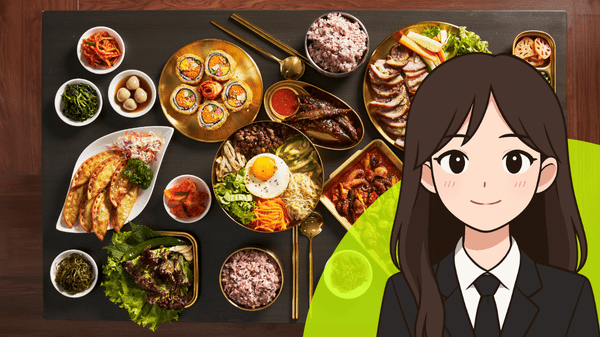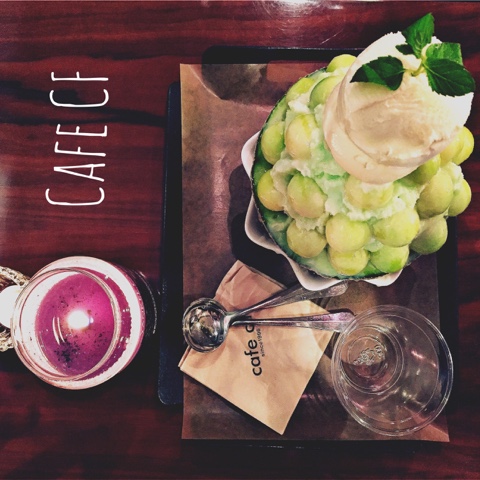
Taste of Korea: 3 Classic Korean Recipes
How much do you know about Korean food? Korean cuisine has captured the hearts (and taste buds) of people around the world. It’s more than just a meal—it’s a culture, a story, and a reflection of the Korean spirit. In this blog post, I would like to introduce 3 classic Korean dishes and their recipes with you.
The following three dishes represent the how diverse Korean flavors are—beloved classics that you’re bound to fall in love with. Ready to taste the soul of Korea? Let’s dig in!
Special Note About Korean Recipes
Have you ever heard the follow phrase or something similar:
Season it until your ancestors tell you to stop
This phrase encompasses how we cook Korean food. The measurements in the recipes below are simply a guide to get you to the base flavors of the dish. However, recipes differ from household to household because, in Korea, we don’t often use measuring cups. Instead of measuring out ingredients perfectly, we taste the dish as we cook it. So, if you would like to add more or less of an ingredient, “season it until your ancestors tell you to stop” or until the food tastes the way you would like it to. If you don’t have Korean ancestors, you can borrow mine while cooking these dishes.
DISH 1: Bulgogi – The Perfect Balance of Sweet and Smoky
Bulgogi is a Korean-style barbecue made by marinating thin slices of beef in a savory-sweet blend of soy sauce, garlic, sesame oil, and pear juice. Once grilled, the meat develops a light smokiness that enhances its juicy and tender texture. Despite its simple preparation, the harmony of flavors and proper marination make all the difference. Often served with a bowl of steamed rice, bulgogi is not only beloved in Korea but also a favorite introduction to Korean cuisine around the world.

Bulgogi Recipe:
Ingredients(For 4 servings)
- Thinly sliced beef: 500 g
- Soy sauce: 60 mL (4 Tbsp)
- Sugar: 25 g (2 Tbsp)
- Sesame oil: 15 mL (1 Tbsp)
- Garlic (minced): 15 g (3 cloves)
- Green onions: 50 g (2 stalks)
- Sesame seeds: 5 g (1 Tbsp)
Instructions
- Mix soy sauce, sugar, sesame oil, garlic, and green onions in a bowl.
- Add the sliced beef and mix well. Let it marinate for at least 30 minutes.
- Heat a pan and cook the beef until it is fully cooked.
- Sprinkle sesame seeds on top before serving.
DISH 2: Bibimbap – Harmony in a Bowl
Bibimbap is a vibrant Korean dish that brings together seasoned vegetables, marinated meat, a fried egg, and gochujang (Korean chili paste) on a bed of warm rice. Each component is prepared separately to retain its unique taste and texture, yet when mixed together, they create a perfectly balanced and flavorful meal. Known for being nutritious and visually stunning, bibimbap has evolved into regional varieties such as Jeonju and Jinju styles. It’s a dish that represents both the aesthetic and culinary philosophy of Korean food.

Bibimbap Recipe:
Ingredients(For 4 servings)
- Cooked rice: 800 g (about 4 bowls)
- Carrot: 100 g (1 medium, julienned)
- Spinach: 150 g
- Bean sprouts: 200 g
- Zucchini: 150 g (1 medium, sliced)
- Mushrooms: 150 g (shiitake or button)
- Fried eggs: 4 eggs
- Gochujang (red chili paste): 60 g (4 Tbsp)
- Sesame oil: 15 mL (1 Tbsp)
Instructions
- Cook the vegetables separately with a little salt and oil.
- Place rice in a bowl.
- Arrange the vegetables on top of the rice.
- Add a fried egg on top.
- Put gochujang and sesame oil before eating.
- Mix everything together and enjoy.
DISH 3: Kimchi Jjigae – A Stew of Depth and Comfort
Kimchi jjigae is a bold, spicy stew made with aged kimchi, pork, tofu, and chili powder. The fermentation of the kimchi creates a deep, tangy flavor that pairs perfectly with the rich broth. Often enjoyed bubbling hot with a bowl of rice, this dish is a staple in Korean households. Variations include tuna, spam, or seafood, depending on the season and personal preference. More than just a meal, kimchi jjigae is a warm, comforting expression of home and tradition for many Koreans.

Kimchi Jjigae Recipe:
Ingredients (For 4 servings)
- Kimchi: 400 g
- Pork (belly or shoulder) 300 g or Tofu 200 g
- Onion: 150 g (1 medium, sliced)
- Garlic: 12 g (3 cloves, minced)
- Gochugaru (red chili flakes): 15 g (1 Tbsp)
- Gochujang (red chili paste): 30 g (2 Tbsp)
- Soy sauce: 15 mL (1 Tbsp)
- Water: 1 liter (4 cups)
Instructions
- Cut the pork (or tofu), onion, and kimchi into bite-sized pieces.
- Put them in a pot with garlic, gochugaru, gochujang, and soy sauce.
- Add water and boil.
- Cook until the meat (or tofu) is soft and the soup tastes rich.
- Serve hot with rice.
Embracing the Heart and Flavor of Korea
Bulgogi, bibimbap, and kimchi jjigae are more than just dishes—they are stories of Korean life, culture, and heart. From the sweet smokiness of grilled meat to the harmony of a mixed rice bowl and the deep warmth of fermented stew, each dish reflects the care, tradition, and soul of Korean cooking.
Korean food is an invitation—a warm welcome served through flavor, patience, and love. If you’re just beginning your journey into Korean cuisine, these three dishes are the perfect place to start. Take a bite, and let the taste of Korea speak for itself.
About the “Shared Voices” Initiative
South of Seoul volunteers collaborate with Korean public schools to provide students meaningful opportunities to expand their English communication experience while sharing their world views with the international community in Korea.
Through guided projects, students in Korean classrooms use digital and creative tools to express themselves in English, building confidence in their communication skills. At the same time, they learn to approach writing with empathy. They participate in guided discussions that consider different perspectives, practicing cultural awareness, and developing a deeper understanding of how their words can connect communities across borders.
It’s important to know that schools in South Korea are becoming increasingly diverse, this includes the students who participate in South of Seoul programs like “Shared Voices.”

Minseo Jeon is a sophomore at Jinwee High School. She lives in Pyeongtaek and majors in beauty, focusing on hair design. She loves food and enjoys trying different kinds of meals in her free time. She also enjoys studying English. She hopes to become a hair stylist in the future.







